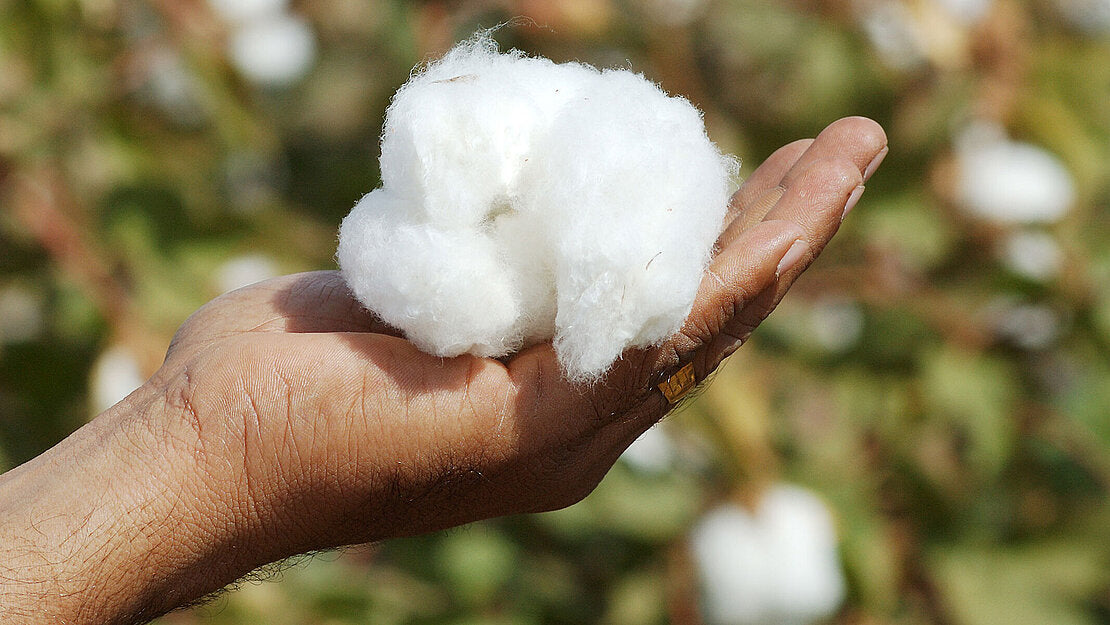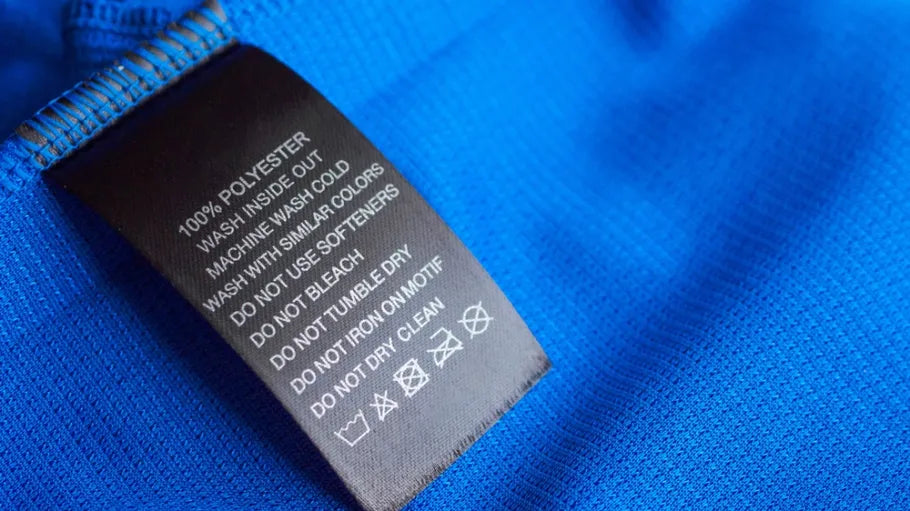Our choice of fabrics goes beyond aesthetics and comfort; it plays a pivotal role in determining how our bodies function and feel. Fabrics can impact the body's electrical balance, the quality of our sleep, and our ability to regulate body temperature. In this blog post, we will explore the intriguing relationship between fabrics and the body's electricity, sleep quality, and heat generation. Additionally, we'll delve into why organic cotton stands out as an exceptionally beneficial fabric in these aspects.
The Body's Electric Symphony
Before delving into the fabric-body connection, it's essential to understand that the human body is a complex electrical system. From the neural impulses that control our movements to the beating of our hearts, electrical signals are a fundamental aspect of our physiology.
Fabric's Influence on the Body's Electricity
The type of fabric we wear can have an impact on our body's electrical balance in several ways:
-
Conductive vs. Insulating Fabrics: Fabrics have varying degrees of conductivity. Materials like metals and certain synthetic fibers can be conductive, which means they allow electrical currents to flow through them. On the other hand, insulating fabrics, such as cotton and wool, create a barrier, helping to preserve the body's natural electrical balance.
-
Static Electricity: Some synthetic fabrics, such as polyester and nylon, are prone to generating static electricity. This can disrupt the body's electrical equilibrium, leading to minor shocks or discomfort. These fabrics might not just be a fashion faux pas; they could interfere with your natural electricity.
-
EMF Protection: Electromagnetic fields (EMF) from electronic devices can disrupt the body's electrical balance. Some fabrics are specifically designed to shield the body from excessive EMF exposure, helping to maintain the body's natural electrical harmony.
Fabrics and Sleep Quality
The quality of our sleep is vital to overall well-being, and the fabrics we wear and sleep on can profoundly impact the quality of our slumber. Here's how fabric choices influence sleep quality:
-
Breathability: Fabrics like cotton and linen are renowned for their breathability. They allow for proper air circulation, which helps regulate body temperature, preventing overheating during sleep.
-
Moisture-Wicking: Fabrics with moisture-wicking properties, such as bamboo and high-quality microfiber, draw moisture away from the body. This can be particularly helpful for those who sweat at night, preventing discomfort and enhancing sleep quality.
-
Hypoallergenic Materials: Fabrics like organic cotton and silk are naturally hypoallergenic, making them a great choice for those with allergies or sensitive skin. Reduced irritation during sleep can lead to more restful nights.
-
Temperature Regulation: Fabrics with temperature-regulating properties, such as phase-change materials, help maintain a comfortable sleep temperature throughout the night, reducing the likelihood of waking up due to feeling too hot or too cold.
-
Softness and Comfort: Soft and comfortable fabrics, like high-quality organic cotton or silk, contribute to a more luxurious and comfortable sleep experience. This can make it easier to fall asleep and stay asleep.
Fabric's Role in Heat Generation
The heat generation abilities of fabrics are especially relevant when it comes to performance and outdoor clothing. However, they can also significantly impact everyday comfort. Different fabrics affect heat generation in various ways:
-
Thermal Fabrics: Some fabrics, such as merino wool, excel at retaining body heat, making them ideal for cold weather. They trap warm air close to the skin, creating an insulating layer that keeps you warm.
-
Cooling Fabrics: Fabrics engineered for cooling, like certain moisture-wicking synthetics or those infused with cooling technology, help dissipate heat and moisture away from the body, ensuring you stay cool in hot weather or during physical activity.
-
Microclimate Regulation: Fabrics with microclimate regulation properties, like those using Outlast technology, adapt to changes in temperature by storing and releasing heat, maintaining a comfortable body temperature.
-
Breathable Fabrics: Breathable fabrics allow air to circulate, preventing heat buildup and promoting temperature balance. This is crucial for activities that generate body heat, such as sports and exercise.
-
Moisture Management: Fabrics that effectively manage moisture, like high-performance synthetics and certain natural fibers, help keep you dry by wicking away sweat and moisture, preventing discomfort caused by wet, clingy clothing.
Organic Cotton: A Natural Wonder
Among the various fabrics available, organic cotton stands out as a natural wonder with numerous benefits. Here's why it's a fabric that promotes the body's electrical balance, enhances sleep quality, and assists in heat generation:
-
Natural and Non-Conductive: Organic cotton is a non-conductive fabric, which means it does not interfere with the body's natural electrical balance. Unlike synthetic materials, it won't create static electricity, ensuring your comfort and well-being.
-
Breathable and Moisture-Wicking: Organic cotton is highly breathable, allowing for optimal air circulation. It is also effective at wicking moisture away from the body, preventing discomfort during sleep or physical activities.
-
Hypoallergenic and Gentle: Organic cotton is naturally hypoallergenic, making it an excellent choice for those with allergies or sensitive skin. It's gentle and reduces the risk of skin irritation or allergic reactions.
-
Temperature Regulation: Organic cotton helps maintain a comfortable body temperature, making it an excellent choice for clothing and bedding. It ensures you stay cool in the heat and warm in the cold.
-
Sustainability and Environmental Benefits: Organic cotton is grown without the use of synthetic pesticides and harmful chemicals. It promotes sustainable and ethical farming practices, reducing environmental impact and supporting fair labor conditions.
Making Informed Fabric Choices
To harness the potential benefits of fabrics on your body's electricity, sleep quality, and heat generation, consider the following tips when choosing clothing and bedding:
-
Prioritize Organic Cotton: Opt for clothing and bedding made from organic cotton whenever possible to benefit from its numerous advantages. The use of organic cotton aligns with sustainable practices and offers great comfort.
-
Match Fabric to Activity: Choose fabrics suitable for the activity you're engaging in. Select moisture-wicking, temperature-regulating fabrics for sports and breathable, comfortable fabrics for daily wear and sleepwear.
-
Seek Specialized Technologies: Explore clothing and bedding with specialized technologies designed to enhance your comfort and well-being. These can include EMF protection, moisture-wicking properties, or temperature regulation.
-
Embrace Sustainability: Whenever you can, choose fabrics that align with sustainable and eco-friendly practices. Supporting environmentally conscious brands helps reduce your carbon footprint and promote a healthier planet.
Conclusion
Fabrics are far more than just fashion statements; they are influential in shaping our daily lives. The choices we make regarding the fabrics we wear and sleep on can have a profound impact on the body's electricity, the quality of our sleep, and our ability to regulate body temperature. Organic cotton, in particular, emerges as a natural wonder, offering numerous benefits and aligning with eco-conscious practices. By making informed fabric choices, we can positively influence our well-being, whether it's through better sleep, improved body harmony, or enhanced comfort, and simultaneously support a more sustainable and ethical textile industry.




Leave a comment
This site is protected by hCaptcha and the hCaptcha Privacy Policy and Terms of Service apply.